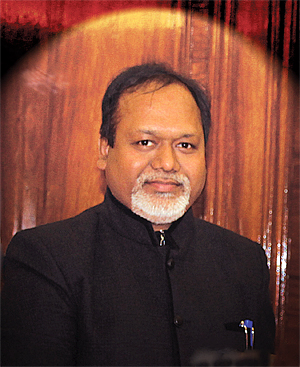INDIAN ARMED FORCES CHIEFS ON
OUR RELENTLESS AND FOCUSED PUBLISHING EFFORTS

SP Guide Publications puts forth a well compiled articulation of issues, pursuits and accomplishments of the Indian Army, over the years

I am confident that SP Guide Publications would continue to inform, inspire and influence.

My compliments to SP Guide Publications for informative and credible reportage on contemporary aerospace issues over the past six decades.
A Word from Editor-in-Chief
New technologies, new aircraft, new approaches are going to mark the sector to make air travel lot more convenient and safer, besides, of course, keeping up with the times.

As we look ahead at 2015, after having gone through a difficult year, the aviation sector, particularly civil aviation seems to be holding up. The turbulence that rocked 2014 – from disappearance of an aircraft to a shooting down – will be reminders for those in the aviation industry to work towards greater safety in the skies. This is an urgent necessity if see the growing number of passengers – a whopping 3.2 billion passengers travelled by air and there is no stopping this growth.
In this issue, we have captured events that grabbed headlines in the civil aviation realm, some good, some not so good, but what is of essence is that there is positive sentiment among all the stakeholders. New technologies, new aircraft, new approaches are going to mark the sector to make air travel lot more convenient and safer, besides, of course, keeping up with the times.
When we talk about new aircraft, we have the Brazilian giant Embraer showcasing its E-Jets E2 which is much more than just re-engining. R.Chandrakanth travelled to Singapore to walk-through the E-Jets E2 cabin mock-up which takes care of a modern day traveller, be it an executive, be it a family on leisure travel or a budget traveller. It is not just the interiors, it is the engine too which is going to give bang for the buck and with lower carbon footprint. The clear focus is the flying customer and sustainability.
On a similar note, we witness how air travel is changing in sync with modern living. How information and communication technology is determining various aspects – avionics, in-flight entertainment, cabin crew management, ground handling, maintenance, etc – of aviation. Almost all the plane manufacturers are glued in on to the concept of Apps driven air mobility.
While that is happening from an industry perspective, governments are not lagging behind in bringing about a conducive eco-system. For instance in India, the NDA government is keen on enhancing regional aviation through the expansion of the network of airports with new ones that would largely be in the low-cost and no-frills category with shorter runways that may limit the size of the airliners operating there. The network would extend into areas that currently are not connected or are in terrain not easy to access by other means of transportation. This plan of the government has enormous potential for the global aerospace industry that is engaged in the production of regional aviation aircraft. As mentioned earlier, this new breed of airliners is clearly focused on enhancing efficiency, in-flight connectivity and passenger comfort elevating travel experience to a new level.
Moving away from civil aviation, it appears that there are new challenges emerging for the nation as also for the Indian Air Force (IAF) on the Sino-Indian border. There is intelligence information available with the IAF to indicate that there has been a significant increase in the number of sorties flown by combat aircraft of the Chinese Air Force, usually referred to as the People’s Liberation Army Air Force, along the line of actual control or the Indo-Tibetan border. This issue of SP’s Aviation carries a brief report on this development.
The government of the day is aware of such situations and is trying to ease the process of induction of equipment in the armed forces so as to give it a distinctive combative edge. The policy of procurement of defence equipment from foreign sources and the procedures laid down are under review. We hope to see a far more pragmatic policy and procedural framework to regulate procurement of defence equipment from abroad.
All this and more apart from the regular features. Welcome aboard and happy landings!





